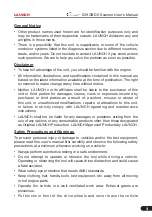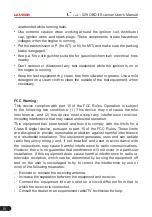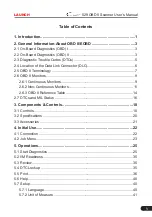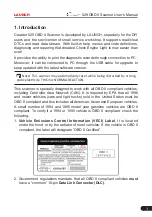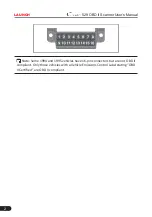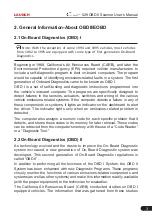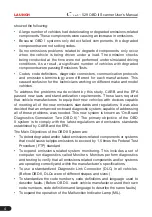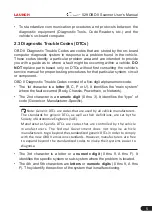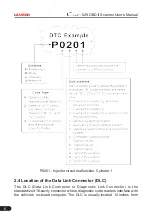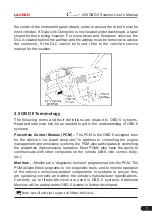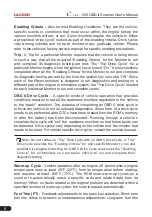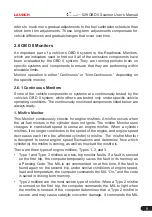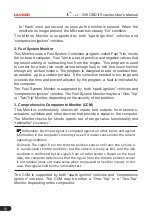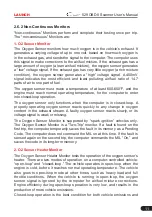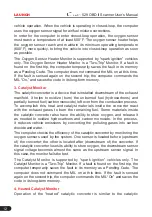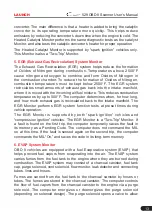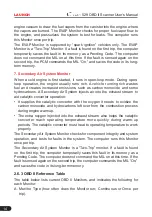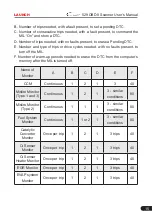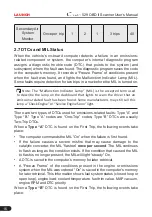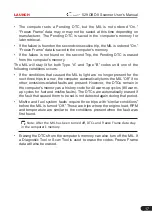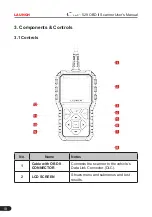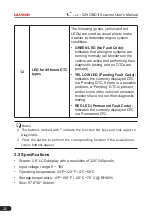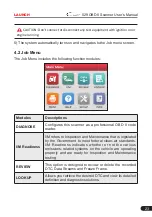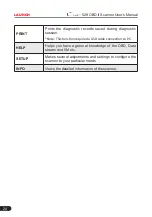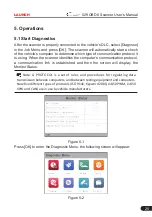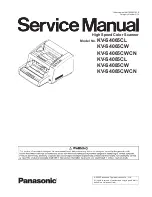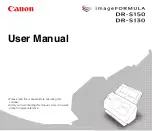
LAUNCH
529 OBD II Scanner User’s Manual
11
2.6.2 Non-Continuous Monitors
“Non-continuous” Monitors perform and complete their testing once per trip.
The “non-continuous” Monitors are:
1. O2 Sensor Monitor
The Oxygen Sensor monitors how much oxygen is in the vehicle’s exhaust. It
generates a varying voltage of up to one volt, based on how much oxygen is
in the exhaust gas, and sends the signal to the computer. The computer uses
this signal to make corrections to the air/fuel mixture. If the exhaust gas has a
large amount of oxygen (a lean air/fuel mixture), the oxygen sensor generates
a “low” voltage signal. If the exhaust gas has very little oxygen (a rich mixture
condition), the oxygen sensor generates a “high” voltage signal. A 450mV
signal indicates the most efficient, and least polluting, air/fuel ratio of 14.7
parts of air to one part of fuel.
The oxygen sensor must reach a temperature of at least 600-650°F, and the
engine must reach normal operating temperature, for the computer to enter
into closed-loop operation.
The oxygen sensor only functions when the computer is in closed-loop. A
properly operating oxygen sensor reacts quickly to any change in oxygen
content in the exhaust stream. A faulty oxygen sensor reacts slowly, or its
voltage signal is weak or missing.
The Oxygen Sensor Monitor is supported by “spark ignition” vehicles only.
The Oxygen Sensor Monitor is a “Two-Trip” monitor. If a fault is found on the
first trip, the computer temporarily saves the fault in its memory as a Pending
Code. The computer does not command the MIL on at this time. If the fault is
sensed again on the second trip, the computer commands the MIL “On,” and
saves the code in its long-term memory.
2. O2 Sensor Heater Monitor
The Oxygen Sensor Heater Monitor tests the operation of the oxygen sensor’s
heater. There are two modes of operation on a computer-controlled vehicle:
“open-loop” and “closed-loop.” The vehicle operates in open-loop when the
engine is cold, before it reaches normal operating temperature. The vehicle
also goes to open-loop mode at other times, such as heavy load and full
throttle conditions. When the vehicle is running in open-loop, the oxygen
sensor signal is ignored by the computer for air/fuel mixture corrections.
Engine efficiency during open-loop operation is very low, and results in the
production of more vehicle emissions.
Closed-loop operation is the best condition for both vehicle emissions and

